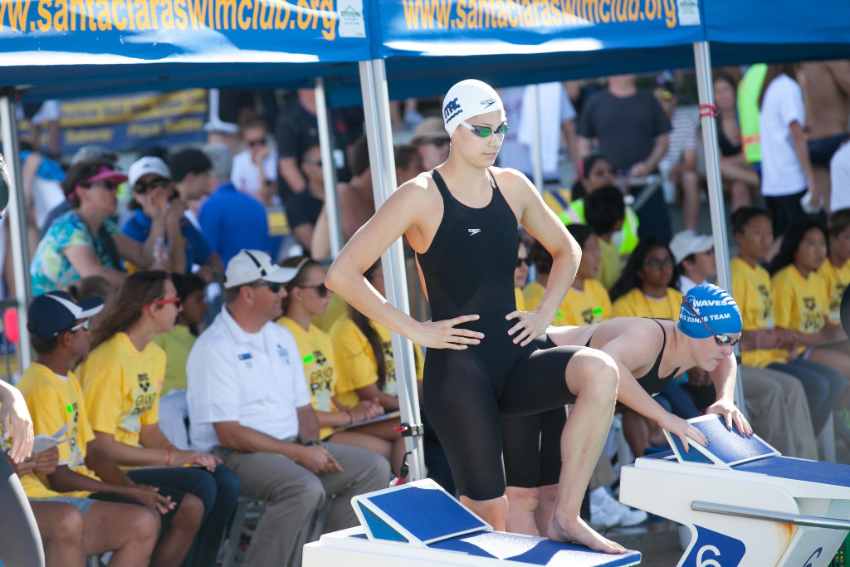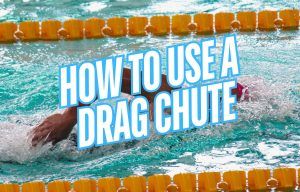The swim goggle is a standard piece of swim gear for both leisure and competitive swimmers. But does that mean you can swim without goggles? Here’s a look at the pros and cons of swimming without goggles.
Swimming goggles have been on pool decks since the early 1970s, when a British swimmer named David Wilkie used them because of a chlorine allergy.
A few years later, at the 1976 Olympics in Montreal, swim goggles were formally allowed in competition.
Since then, wearing swim goggles has become the de facto standard when jumping into the pool to swim laps, whether it’s for recreation or for chasing Olympic gold.
But does that mean you should absolutely wear swim goggles when swimming?
In this article, we will look at why you should wear swim goggles, some instances where you should consider not wearing them, and more.
Let’s dive right in!
Reasons to Wear Swim Goggles When Swimming
Before we jump into the situations where you should consider swimming without goggles, let’s get into the reasons that they are so popular and essential when we hit the water.
Some of the benefits of wearing swim goggles when mastering your swimming strokes include:
Protects your eyes from UV exposure.
For outdoor swimmers, battling against the resistance of the water and the competition in the next lane is tough enough.
Add to that a blistering sun that is blasting your eyes with UV radiation.
Dark or mirrored swim goggles are designed specifically to reflect UV rays away so that you don’t damage your eyes from naked exposure to the sun for hours on end.
See also: Why Do Swimmers Wear Mirrored Swim Goggles?
Eliminates glare from the sun.
On the topic of the sun and UV rays, swimmers doing their thing outside, whether it’s in an outdoor pool or out on open water, also have to contend with the glare of the sun on the surface of the water.
In an outdoor pool, this can be largely a nuisance, but when swimming out on open water, and you need swim goggles to sight properly, it’s very much a safety concern.
Swim goggles with polarized lenses nearly completely eliminate glare from the surface of the water.
While the sun dancing on the water looks pretty from shore, when in the water we want to be able to properly see where we are going, and polarized lenses on swim goggles allow us to do this.
Increases range of vision under the water.
The human eye is not designed to see well under the water. Although old-school purists will tell you to toughen up, there is simply no getting around the fact that light travels differently under the water.
Our eyes are built to focus light inside the retina, but because light bends twice under the surface of the water, the image is distorted and we strain to make it focus properly.
Swim goggles alleviate the strain and create a buffer of air between the water and our eyes, giving us the benefit of being able to see as though we were on dry land while under the water.
Allows you to better time turns.
This point is more geared towards the recreational and competitive swimmer. Flip turns are tricky to master as a beginner swimmer, and even very experienced swimmers can fluff a flip-turn under pressure.
For example, Michael Phelps, the GOAT, during a swim meet at a US Nationals meet in 2014, almost completely mistimed his flip turn during the semi-final of the 100m freestyle.
He just barely toe’d the wall with the tips of his feet, wasting a precious push-off that cost him significant time.
Flip turns, as well as breaststroke and butterfly two-handed touches, require perfect timing, and being able to see exactly how far the wall away is through our swim goggles allows us to time it properly.
Keep chloramines out of your eyes.
Ever been to a public swimming pool and emerged half an hour later with red, itchy, and super itchy eyes?
You probably thought that was chlorine. You’d be half right. The compound that causes this rabid itchiness is chloramines, a byproduct of free chlorine and organic waste.
(Yes, I know. Eww.)
No matter how many signs you see that say “Welcome to our ‘OOL’, please keep it that way” you know people are sweating, peeing, and leaving all sorts of other oils and liquids in the pool that are going to combine with chlorine to create combined chlorine (chloramines).
Swim goggles won’t make you forget that I just told you that that is the source of the red and itchy eyes, but at least you can go for a swim and not be scratching your eyes like a lottery ticket when you leave the pool.
Gives inexperienced swimmers confidence
What’s the first thing people do when they are splashed?
Close their eyes.
This is a natural instinct, a natural revulsion to getting water in the eyes.
Getting water in the eyes is simply uncomfortable, and can act as an impediment for young children (or adults late to learning how to swim!) as they begin their journey with getting confident in the water.
Swim goggles aren’t just for the aspiring Michael Phelps’ and Katie Ledeckys of the world; they are just as necessary for new swimmers who are becoming water literate.
Swim goggles are a tool that help beginner swimmers dunk their head in the water without reverting to closing their eyes or shying away from getting their face wet.
How to Swim in the Water without Swim Goggles
Okay, so you are dead-set on hitting the pool without a pair of your favorite goggles.
Or maybe they are just super uncomfortable.
Or maybe, you are a competitive swimmer who wants to acclimatize themselves to swimming without goggles so that in the event your goggles fall off during a race, you’ll be ready.
Here are some tips for getting your eyes ready for going goggle-free:
Build up your tolerance slowly.
The first time you swim without goggles will be weird as hell. Your eyes will have difficulty focusing, the edges of your vision will be dark, and your eyes will strain to make sense of the fuzzy image in front of them.
Swimming without goggles takes time to get used to, so ease into by doing it a few laps at a time to allow your eyes to get used to the sensation of water on the cornea and the inability to quickly and properly focus.
Swimmer’s eyedrops post swim.
Eye drops will reduce the inflammation and itchiness so that you don’t spend the rest of the day jamming your fingers in and out of your eyes, making the irriation worse.
Specially formulated eye drops will also nuke any bacteria that is lingering on your eyes. If eyedrops aren’t your thing, or you don’t have any handy, give your eyes a gentle fresh water rinse after you have completed your swim.
The Final Lap
At the end of the day, swimming well and swimming safely happens when we see clearly under the water.
Swimming goggles are the easiest and cheapest way to do this.
While there are some reasons that you would want to condition yourself to be able to see under the water with confidence, for the most part, you should stick to strapping on a pair of goggles when you hit the water.













